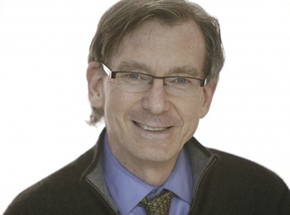April 18, 2015 marks the 10-year Anniversary of Salt City Horror Fest at the Palace Theatre (2384 James St.). Eight feature films will be shown in the 35mm format, and a special Rochester-based bonus will be screened at 10 p.m.. Enjoy all of the films for $20 (in advance) or $25 (at the door) from noon to the wee hours of the morning. Doors will open at 11 a.m. There will be food trucks available outside and in the parking lot. Comedian Alex Bidwell will take the stage at 7:15 p.m.
Christopher Malone had a phone conversation with playwright, actor and production assistant, Martin Casella, who may be contacted via Skype the day of Salt City Horror Fest.
Playwright Martin Casella explains that his role of Marty in Poltergeist (1982) was a dream come true. It was a defining experience. He’s had the opportunity to work in various sectors of the film industry and alongside big names, but he has a great fondness for his current role as a writer.
As mentioned in my interview with Oliver Robins, we talked about hits and often misses regarding computer-generated imagery or CGI. In Poltergeist, the majority of special effects were done classically.
“A lot of the people that I speak to at conventions are big fans of special effects. People are getting tired of CGI. The effects look like cartoons. The animation does not look real.” He brought up E.T. the Extraterrestrial (1982) as a bad example. In the revised (CGI) version, the titular character’s head raises to an unrealistic jack-in-the-box height, and the replacement of guns for walkie-talkies was unrealistic and almost absurd.
Considering the process of wowing an audience with the aesthetics of a production, Casella has a firm personal belief that it’s important to recognize the difference between digital movies and “honest films.”
Casella has received international recognition for his work, especially The Irish Curse – a comedy-drama that centers around five professional Irish-American New Yorkers with great careers, but less-than-adequate penises. It tackles society, stereotypes and masculinity all in a 90-minute performance.
Of course, stage and film are drastically different animals when considering production and writing.
“Plays are about people, ideas, and storytelling,” Casella said. “With films, the primary focus is who is directing and the stars.”
In plays, there are no explosions to drive the action. It’s the tangibility and believable topics that pull on the heartstrings of the ticket holder. And, there is no CGI.
“The CGI … it gets to a point where your mind shuts off. You don’t care about the people anymore.”
Despite the popularity of computer generated imagery in modern movies, Casella’s love of writing and film encouraged him to become a part of Hollywood.
“I’ve always loved movies,” Casella said, “and I have always wanted to be an actor when I was a kid. That’s what I studied in college and what I did when I first graduated.”
Casella worked in production and as an assistant to Stephen Spielberg for Used Cars (1980) and Raiders of the Lost Ark (1981).
“There weren’t any unions to cover the jobs in production, so there weren’t any rules about how long you were supposed to work, and the days were incredibly long.” Casella was often one of the first people to arrive and the last people to leave.
“These were the days before cellphones, so I had to find payphones in order to to call back to the office and check in.”
While in Africa shooting Raiders, Casella had to stay in a rundown hotel 20 miles away from the resort where the production team was filming. Casella had to drive back and forth, early morning and late at night, to and from the resort. Although it is done electronically now, call sheets had to be personally distributed under the doors of the crew members.
Casella was also the go-to guy for dropping off scripts to potential leads at their homes. “I had to hand the scripts over to Tom Selleck and Harrison Ford among others, I’d give them an hour to read through it, and then I’d knock on the door an hour later to take the script back.”
He’s always enjoyed Ford, giving recognition to the actor’s gravelly personality. “He has a certain crankiness to him and his sense of humor. It has always given his roles more depth.”
It’s the personality traits like Ford’s that adds to that characters Casella creates. The characters, as fictional as they are, have a charm that grounds each of them. It’s how we, as audience members relate.
To add to his resume, Casella teaches a play writing class in a Manhattan high school. “We talk about plays and film all of the time. Once I prompted the kids: ‘Plays are about ideas, so what are movies about?’ One of the girls in my class just looked at me and said, ‘Boom!’ The moment was very funny, because she is smart. I looked at the class and said, “Yes, that’s correct.”
Casella knows how a movie will do at the box office without having to check his entertainment sources, because the students are spot-on.
“Whatever is popular, they’ll be talking about it,” he said.
“Disney is big, because they are recreating their movies, but focusing on the villain. Cate Blanchett is the biggest star of Cinderella. Villains are the go-to role, because they are the most interesting. Look at Heath Ledger, Javier Bardem … Julia Roberts and Meryl Streep were each an antagonist in August: Osage County.”
However, he emphasized the characters and the relationships.
“In The Avengers, Gweneth Paltrow’s character is shown up in a plane, watching the action take place on a television. Is that what we’ve come to? We’ve reduced the actors to watching video screens.”
Casella is a fan of movies, but the concept of overproduction still rings deficient. “I really like Skyfall, but the scenes with the crashes … it just felt unsatisfying to me. It felt like the studio tacked it on because they felt a giant moment was needed. And don’t get me started on The Hobbit movies.”
All of the special effects for Poltergeist were done on camera, he emphasized. The clown, the ripping apart of his character’s face, and the objects crawling upon surfaces were done on-set and in real time. The steak that crawls across the counter had to be placed on the counter in a specific spot due to the camera filming the piece of meat from above.
“The kitchen scene was one long take,” Casella said, and the entire process took about 20 takes to film. The lighting was what it was: the oven light, the flashlight, and the moonlight. As he walked through the scene, he had to hit various marks. “I had to pull things from the refrigerator and take bites of food that I didn’t like in real life.”
One of the most iconic scenes of horror movie history features Casella’s character, Marty. His story adds to a deeper appreciation of the scene:
“When we did the scene with my face falling off, it was a dummy. I started the scene off, picking at my face, but the rest was played out with the dummy. The hands that were pulling the skin off of its face actually belonged to Stephen (Spielberg).
The dummy was so expensive and took months to make, so we aimed to do one take. I gave Stephen the ring and watch that I was wearing, and I let him tear the thing apart. Later, the scene was reviewed and the cut was not cut properly. There was a segment missing. So, I had to go back and re-film the part with me in it. At the time of the re-shoot, I was starring in a play and had to cut my hair for the role. The wig was taken off the dummy and placed on my head.
 After three hours in the makeup chair, the prosthetic patch filled with blood and other things was applied to my cheek and jawline, and it was covered with makeup. I picked at my cheek and the scene was shot fluidly.
Unfortunately, the scene had to be shot again. The original scene was shot at two different angles: the on-site photographer took shots at one angle, and it was filmed through the mirror and at another angle. The patch was placed on the wrong side of my face. The final scene, which Frank Marshall directed and shot that day, is three different pieces. Frank is great, and he was so patient and funny. In the looping studio, I was watching the scene and burst out laughing. They asked what was so funny, and I said, ‘Everybody’s going to remember this.'”
And they have. The picture has appeared on promos, on the side of video cassette boxes, and Poltergeist was parodied in MAD Magazine, which Casella refers to as an accomplishment and a “sense of immortality.”
He spends his days traveling and writing. The Irish Curse has taken off, and has been received well in Europe. Samuel French published the play five years ago, picking it up solely in English. Casella stated that the publisher felt the play was difficult to translate. The premise is very specific, and the culture of Irish-Americans is zeroed in on; elements would have been lost if translated into different languages.
“It’s been so much fun watching the play performed,” Casella said. Last summer, the show was performed in Slovakia. He’s going to Prague next month. The fact that the audiences abroad laugh just as hard and applaud as Americans do is reassuring.”
“The crazy thing about being a writer, unless you’re a big A-List writer, you’re often the last person to be contacted. Of all the big things I’ve worked on, they have never included me on the press junket. As a playwright, I’m the one people want to interview. A press conference in Europe brought in 250 writers from Czech Republic, Hungary, and Austria … and they all asked me questions.”
He never second-guessed his transition from acting to writing.
Casella insisted to embrace life, and accept the good with the bad. For the really good moments, embrace and use them as catalysts to push yourself. “If you’re lucky, you’ll have two or three defining experiences in your life … three or four if you are really lucky.”
After three hours in the makeup chair, the prosthetic patch filled with blood and other things was applied to my cheek and jawline, and it was covered with makeup. I picked at my cheek and the scene was shot fluidly.
Unfortunately, the scene had to be shot again. The original scene was shot at two different angles: the on-site photographer took shots at one angle, and it was filmed through the mirror and at another angle. The patch was placed on the wrong side of my face. The final scene, which Frank Marshall directed and shot that day, is three different pieces. Frank is great, and he was so patient and funny. In the looping studio, I was watching the scene and burst out laughing. They asked what was so funny, and I said, ‘Everybody’s going to remember this.'”
And they have. The picture has appeared on promos, on the side of video cassette boxes, and Poltergeist was parodied in MAD Magazine, which Casella refers to as an accomplishment and a “sense of immortality.”
He spends his days traveling and writing. The Irish Curse has taken off, and has been received well in Europe. Samuel French published the play five years ago, picking it up solely in English. Casella stated that the publisher felt the play was difficult to translate. The premise is very specific, and the culture of Irish-Americans is zeroed in on; elements would have been lost if translated into different languages.
“It’s been so much fun watching the play performed,” Casella said. Last summer, the show was performed in Slovakia. He’s going to Prague next month. The fact that the audiences abroad laugh just as hard and applaud as Americans do is reassuring.”
“The crazy thing about being a writer, unless you’re a big A-List writer, you’re often the last person to be contacted. Of all the big things I’ve worked on, they have never included me on the press junket. As a playwright, I’m the one people want to interview. A press conference in Europe brought in 250 writers from Czech Republic, Hungary, and Austria … and they all asked me questions.”
He never second-guessed his transition from acting to writing.
Casella insisted to embrace life, and accept the good with the bad. For the really good moments, embrace and use them as catalysts to push yourself. “If you’re lucky, you’ll have two or three defining experiences in your life … three or four if you are really lucky.”

 After three hours in the makeup chair, the prosthetic patch filled with blood and other things was applied to my cheek and jawline, and it was covered with makeup. I picked at my cheek and the scene was shot fluidly.
Unfortunately, the scene had to be shot again. The original scene was shot at two different angles: the on-site photographer took shots at one angle, and it was filmed through the mirror and at another angle. The patch was placed on the wrong side of my face. The final scene, which Frank Marshall directed and shot that day, is three different pieces. Frank is great, and he was so patient and funny. In the looping studio, I was watching the scene and burst out laughing. They asked what was so funny, and I said, ‘Everybody’s going to remember this.'”
And they have. The picture has appeared on promos, on the side of video cassette boxes, and Poltergeist was parodied in MAD Magazine, which Casella refers to as an accomplishment and a “sense of immortality.”
He spends his days traveling and writing. The Irish Curse has taken off, and has been received well in Europe. Samuel French published the play five years ago, picking it up solely in English. Casella stated that the publisher felt the play was difficult to translate. The premise is very specific, and the culture of Irish-Americans is zeroed in on; elements would have been lost if translated into different languages.
“It’s been so much fun watching the play performed,” Casella said. Last summer, the show was performed in Slovakia. He’s going to Prague next month. The fact that the audiences abroad laugh just as hard and applaud as Americans do is reassuring.”
“The crazy thing about being a writer, unless you’re a big A-List writer, you’re often the last person to be contacted. Of all the big things I’ve worked on, they have never included me on the press junket. As a playwright, I’m the one people want to interview. A press conference in Europe brought in 250 writers from Czech Republic, Hungary, and Austria … and they all asked me questions.”
He never second-guessed his transition from acting to writing.
Casella insisted to embrace life, and accept the good with the bad. For the really good moments, embrace and use them as catalysts to push yourself. “If you’re lucky, you’ll have two or three defining experiences in your life … three or four if you are really lucky.”
After three hours in the makeup chair, the prosthetic patch filled with blood and other things was applied to my cheek and jawline, and it was covered with makeup. I picked at my cheek and the scene was shot fluidly.
Unfortunately, the scene had to be shot again. The original scene was shot at two different angles: the on-site photographer took shots at one angle, and it was filmed through the mirror and at another angle. The patch was placed on the wrong side of my face. The final scene, which Frank Marshall directed and shot that day, is three different pieces. Frank is great, and he was so patient and funny. In the looping studio, I was watching the scene and burst out laughing. They asked what was so funny, and I said, ‘Everybody’s going to remember this.'”
And they have. The picture has appeared on promos, on the side of video cassette boxes, and Poltergeist was parodied in MAD Magazine, which Casella refers to as an accomplishment and a “sense of immortality.”
He spends his days traveling and writing. The Irish Curse has taken off, and has been received well in Europe. Samuel French published the play five years ago, picking it up solely in English. Casella stated that the publisher felt the play was difficult to translate. The premise is very specific, and the culture of Irish-Americans is zeroed in on; elements would have been lost if translated into different languages.
“It’s been so much fun watching the play performed,” Casella said. Last summer, the show was performed in Slovakia. He’s going to Prague next month. The fact that the audiences abroad laugh just as hard and applaud as Americans do is reassuring.”
“The crazy thing about being a writer, unless you’re a big A-List writer, you’re often the last person to be contacted. Of all the big things I’ve worked on, they have never included me on the press junket. As a playwright, I’m the one people want to interview. A press conference in Europe brought in 250 writers from Czech Republic, Hungary, and Austria … and they all asked me questions.”
He never second-guessed his transition from acting to writing.
Casella insisted to embrace life, and accept the good with the bad. For the really good moments, embrace and use them as catalysts to push yourself. “If you’re lucky, you’ll have two or three defining experiences in your life … three or four if you are really lucky.”
2015 Salt City Horror Fest
April 18 Palace Theater 2384 James St. Doors open at 11 a.m. Tickets: $20 Advance, $25 at the door WEBSITEFilm Schedule
12 p.m. – Big Trouble in Little China 1:30 p.m. – Beetlejuice 3:50 p.m. – Poltergeist 5:30 p.m. – Dr. Who and The Daleks 7:30 p.m. – Comedian Alex Bidwell performs 7:45 p.m. – Clockwork Orange 10 p.m. – The Chunkblow 10:15 p.m. – Spider Baby 11:40 p.m. – Creepshow 1 a.m. – Demons 2












